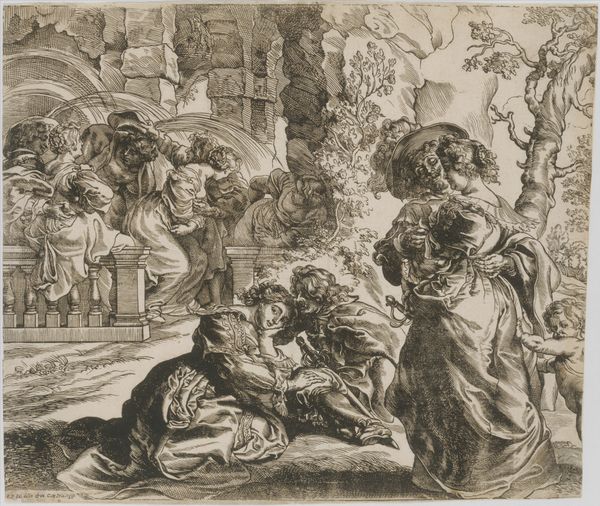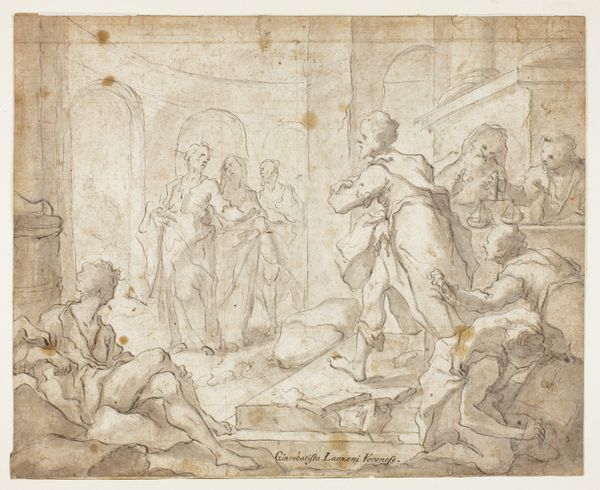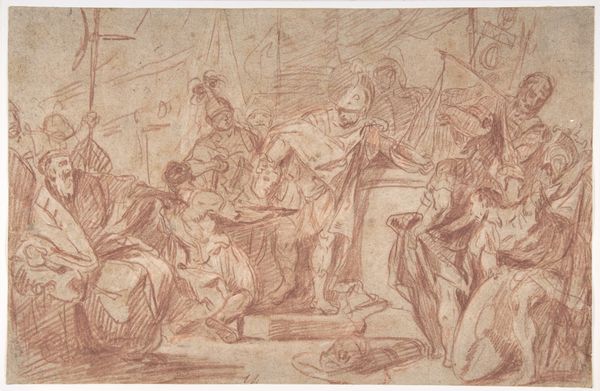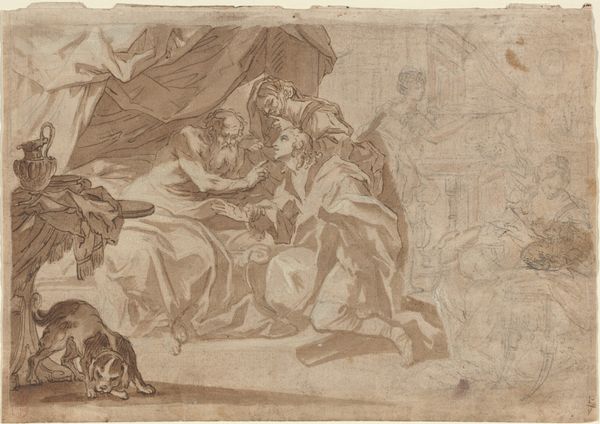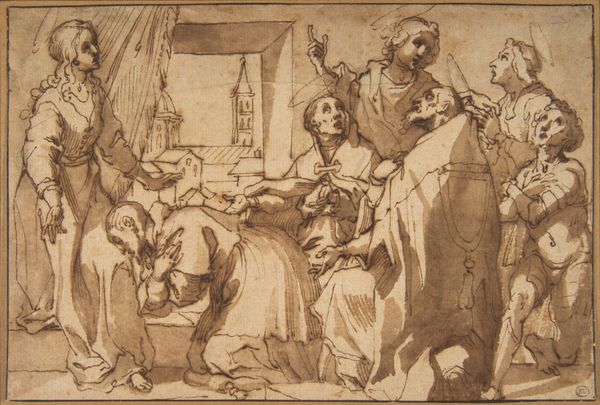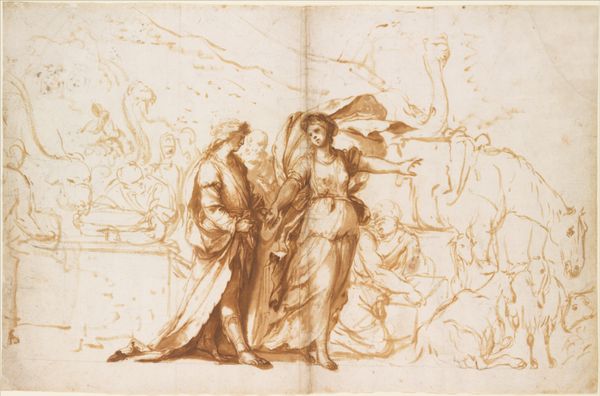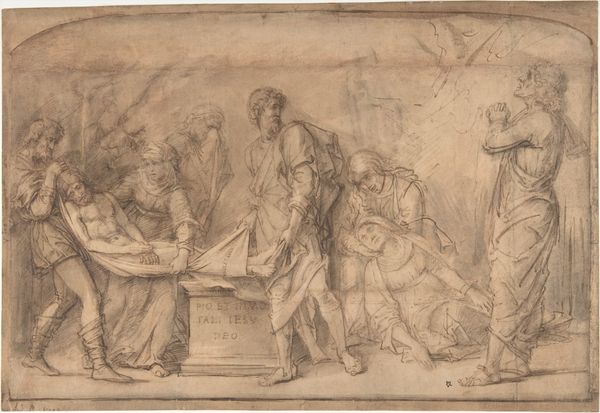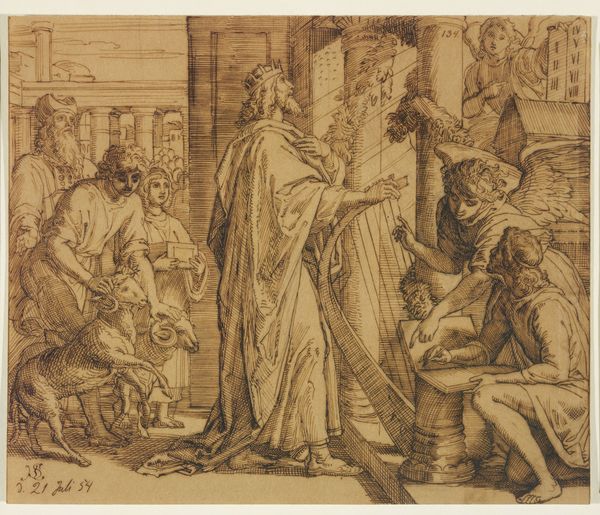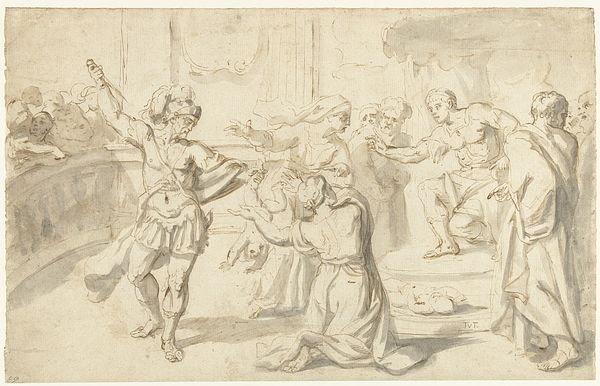
drawing, ink, pen
#
drawing
#
baroque
#
charcoal drawing
#
figuration
#
ink
#
pen
#
history-painting
Dimensions: 7 9/16 x 9 11/16 in. (19.21 x 24.57 cm) (sheet)8 1/16 x 10 1/8 in. (20.48 x 25.72 cm) (mount)
Copyright: Public Domain
Silvestro Manaigo created this drawing with pen and brown ink, depicting the Roman hero Mucius Scaevola. Note the central motif: a man calmly thrusting his right hand into a flame. This wasn't mindless self-harm; it was a display of Roman courage. Scaevola, captured after attempting to assassinate an enemy king, demonstrated his resolve by burning his hand, vowing that hundreds of Romans were ready to do the same. The king, impressed, released him, leading to a peace treaty. The image of self-inflicted pain as a symbol of strength has roots stretching back centuries. Consider the flagellants of the Middle Ages, who whipped themselves into frenzies of religious fervor. Or the stoics, who believed emotional control was the ultimate virtue. In each case, pain becomes a potent symbol of power, a means of transcending the limitations of the physical body. Observe the king’s reaction: a mix of awe and horror. This emotional complexity reveals a deeper, subconscious tension. The act of self-sacrifice becomes a spectacle, a performance of power that transcends the boundaries of reason. The symbol recurs, each time molded by the cultural anxieties and aspirations of its age.
Comments
No comments
Be the first to comment and join the conversation on the ultimate creative platform.
